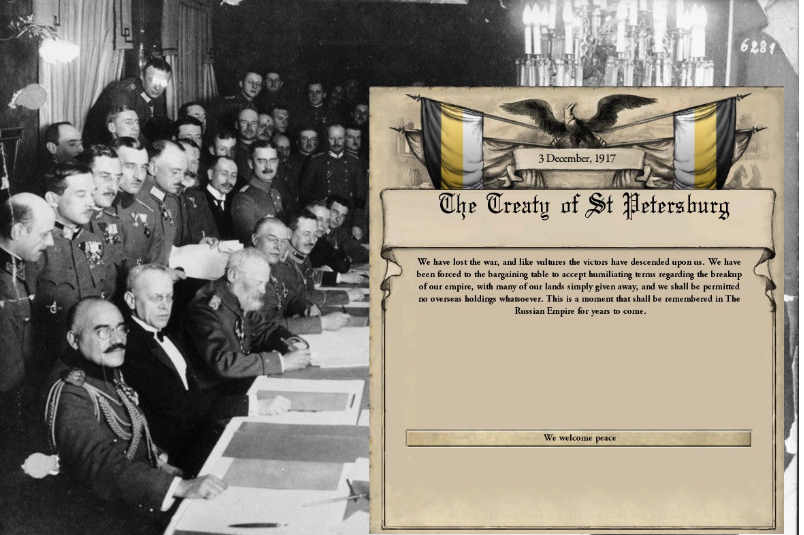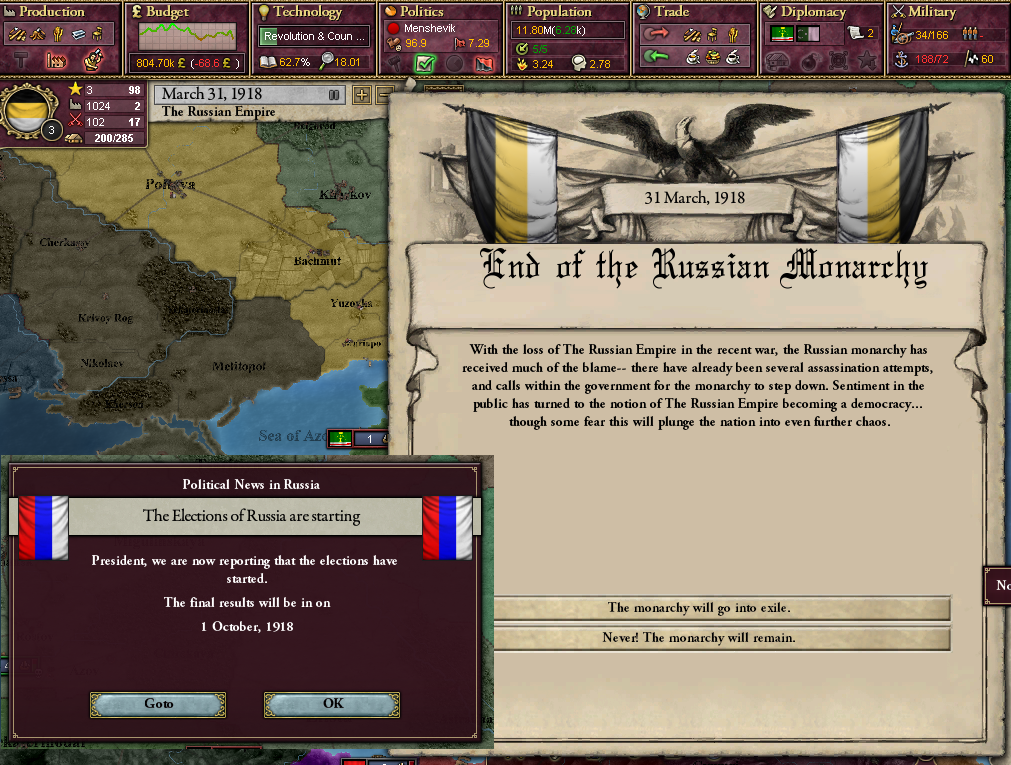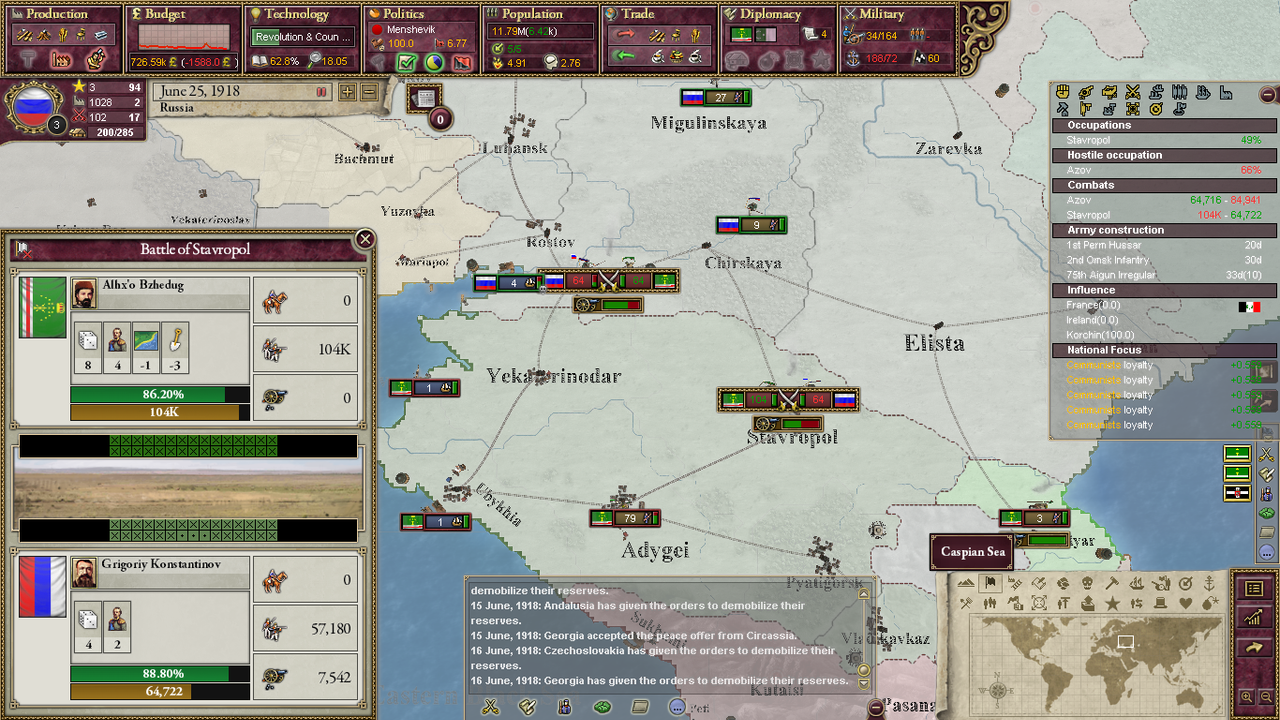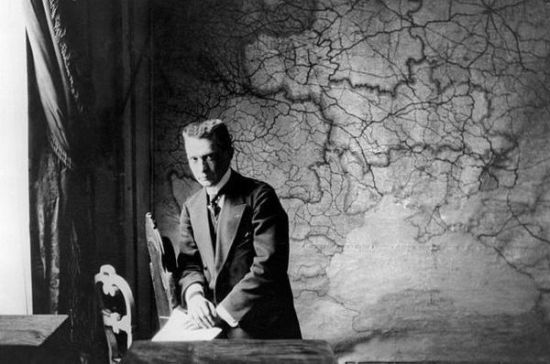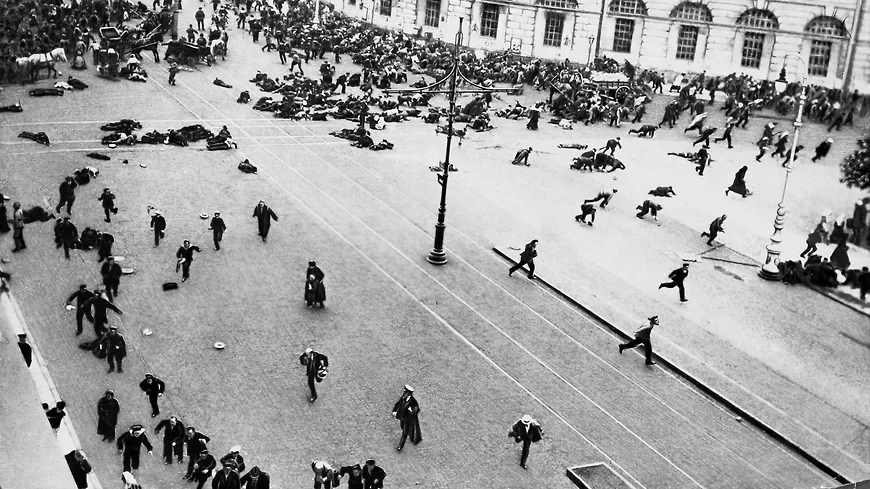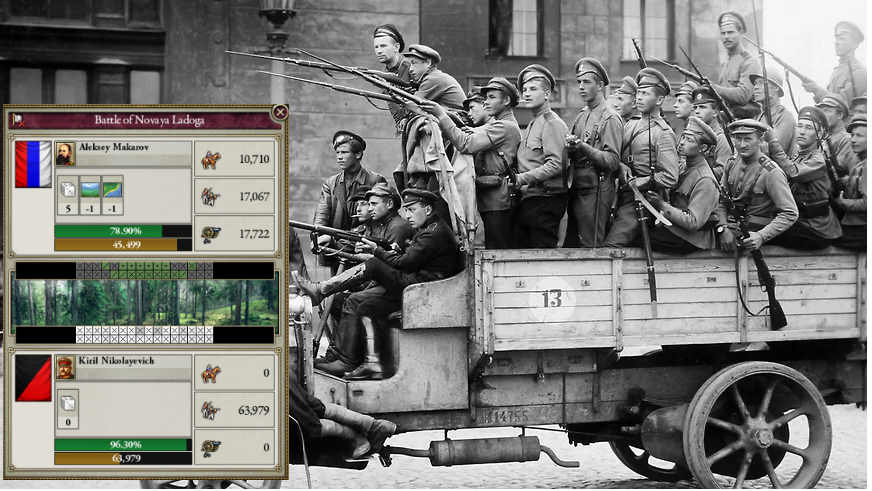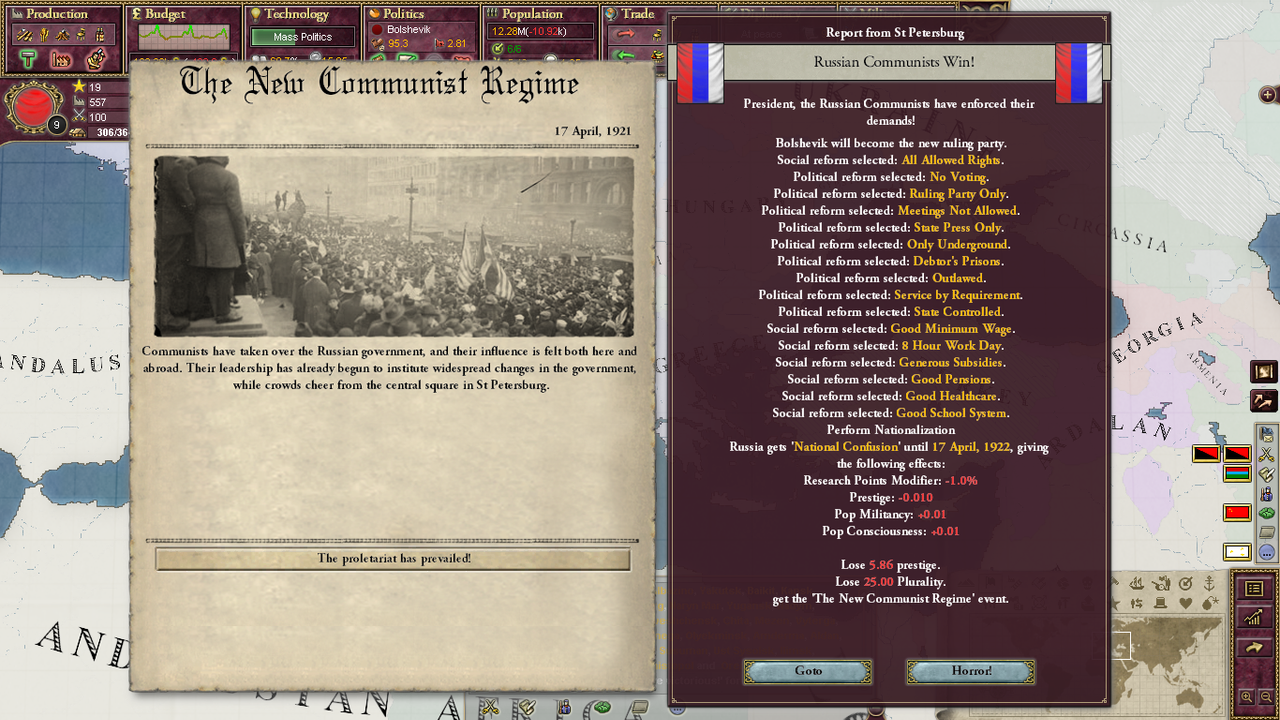The Russian troops fought back the enemy at the Battle of Narva last time in the Great war (15 July 1917). Two months later the German army defeated the Russian troops at the Battle of Luga (20 October 1917), having blockaded Saint-Petersburg. Tsar Nicholas II Meri was forced to sign a disgraceful
Peace Treaty (03 December 1917) whereby vast territories departed from Russia and over 20 million people found themselves outside the Russia Empire. The Russian Empire, founded in 1204 AD, fatally lost the Great War and eventually ceased to exist, having lost substantial part of its territory and colonies. Poland, Estonia, Lithuania, Latvia, Belorussia and Ukraine had hopefully gained long-awaited independence. However, they came immediately under the influence of the German Empire, which provides to them all needed military, diplomatic and financial support.
The Reign of the House of Meri, that had been lasted for about 1 000 years, has tragically ended after the bitter fight with another continental empire. Tsar Nicholas II Meri abdicated on 31 March 1918 at his suburban Imperial palace near Gatchina. He later went to Azov and sailed for Greece, accompanied by royal court and his own family. The Royal Couple reached Constantinople on 12 May 1918; at that time the city was transferred to Greece according to the Treaty of Saint-Petersburg. The Greek government decided to settle the Meri’s in Attika. Nicholas II Meri died there in 1927 of heartbreak, his son Alexei became a head of the House Meri, hopeless dreaming of the Russian Imperial Crown. After the abdication of Nicholas II Meri, a parliamentary election was announced. President is elected by parliament according to the transitional constitutional provision. Campaigning period lasted from April to October 1918. The current socialistic government, which won the election last July, is headed by
Leo Trosky, an ambitious leftist politician. As an acting head of government, he is widely seen to become the new leader of Russia.
Circassia, a former vassal of the Russian Empire, gained independence and begun a highly aggressive territorial expansion through conquering the neighboring nations in the Caucasus. Dagestan was aggressed by Circassia on 10 April 1918 and
Leo Trosky came to the aid. He wanted to increase his popularity and the socialist party before the improved parliamentary elections. Unfortunately, Leo Trosky still remained captive to imperial prejudice and stereotyping. The army of Circassia wiped out the weak and demoralized troops of the Provisional Government at the Battle of Stavropol (25 June 1918). T
he Russian armies were defeated and Leo Trosky himself was captured. Russia lost the war with its former colony and Circassia annexed Dagestan, threatening other countries in the region. The outstanding and promising political career of
Leo Trosky appeared to came to the end.
The Socialists had no chance of winning the election after losing the war and the captivity of its leader. Voting in the parliamentary election gave the following results: Panslavic 8.71%, Socialist 15.97%, Kadets 26.90%, Octobrists 15.63%, Fascists 12.27%, Bolshevik 2.30% and Menshevik 17.72%. The Liberals won the election taking 43% of the popular vote (Kadets and Octobrists). The Socialists received 36% of votes (Socialist, Bolshevik and Menshevik). Liberal
Alexandr Kerensky, a young lawyer from a noble family, was elected as the first President of the Russian Republic. Meanwhile, Vladimir Lenin received the mandate of the Russian Parliament deputy from the fraction «Bolsheviks». This way, he was able to legally return to Russia from Finland, which gave him asylum during the tsarist persecution.
It is not easy to describe the course of political events inside the Russian Republic from
October 1918 to April 1921, when a radical socialistic faction seized power by force. Alexandr Kerensky tried unsuccessfully to stabilize the situation and reduce the level of violence in Russia. The Government pursued a policy of economic and political liberalization, reducing state influence and control in the all spheres of society. Sadly, there were many radical political groups that want to drive their own agenda by any means, including violence and provocation. Both fascists and socialists of all stripes constantly destabilized the situation in the Republic, which still cannot return to stability after the Great War.
Fascists were recruiting members from high level social classes, who were dissatisfied with democracy and confused by the fall of monarchy. The fascist agitators defended their radical ideas among the workers within the trade unions and opposed the aspirations of revolutionary socialism. In addition, they started organizing fighting armed squads among workers and particularly demobilized soldiers who were fired because of downsizing of the armed forces (a condition of the peace agreement).
Socialists planned an armed uprising by recruiting supporters in military circles and large factories, many of which were closed due to bankruptcy. They had a chance to rail against the government after Alexandr Kerensky had not supported for Gazi against Circassia, which again attacked its neighbor. Militant socialists raised
on 05 July 1919, when Russia was embroiled in insurgency. The Government could hardly suppress the rebellion by the end of the year. General Aleksey Makarov defeated red insurgents who stormed St. Petersburg.
But that was just beginning of the collapse of republic. The Bolsheviks were plotting to undermine the weak government and revolted on
20 October 1920. Gennadiy Budonnyy led a Russian Red Guard of over 50 000 in the uprising to seize the building of the liberal state and storm the Winter Palace. Saint-Petersburg was, in effect, in the hands of rebels two months later. On
April 17, 1921 Soviet power was proclaimed in St. Petersburg. The Socialistic Congress elected a central executive committee of The Russian Socialistic Republic headed by Vladimir Lenin. Sonn after the uprising, Russia was plunged into bloody civil war for almost six years.


